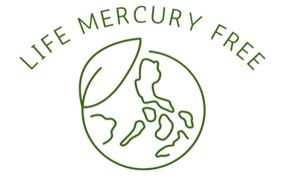

LIFE MERCURY-FREE project raises the issue of mercury environmental contamination, which come from traditionally underestimated sources related to use of mercury-containing goods in everyday life, mishandled by consumers because of the lack of information and consumer-friendly means of disposal.
The General Objective of the project is to reduce the environmental contamination by mercury contained in household consumer goods, mishandled by consumers, through providing an informational support via a communication and cooperation platform, organizing the wide informational and educational campaign and behavioural change activities, applying Behavioural Insights approach, building a multi-stakeholder confidence by creation of Mercury-Free City Communities in the cities, participating in the project, and applying the Multi-Stakeholder Dialogue methodology for their joint search for the problem solution.
Project Description
The LIFE MERCURY-FREE project brings up the issue of mercury environmental contamination which originates from previously underappreciated sources related to the use of mercury-containing products in daily life. Consumers improperly handle these sources due to a lack of information and consumer-friendly disposal methods.
The project’s general goal is to lessen the environmental contamination caused by mercury present in consumer goods used improperly by consumers. This is going to be achieved by providing informational support through a communication and cooperation platform, organizing a widespread informational and educational campaign and behaviour change activities, using a behavioural insights approach, and creating Mercury-Free City Communities in the target area.
Four towns with similar characteristics will serve as the project’s test sites: Lodz and Kracow in Poland; Lodz and Ivano-Frankivsk in Ukraine (a country that has not yet ratified the Minamata Convention); and Lviv and Ivano-Frankivsk in Ukraine. The control cities and replicators of the initial project findings will be three more cities: Larissa (Greece), Evora (Portugal), and Camerino (Italy).
Background
The research is focused on the issue of mercury pollution in the environment, which is particularly hazardous to both human health and animals. Mercury levels in the atmosphere and oceans are currently up to 500% above natural levels, according to the European Environment Agency paper “Mercury in Europe’s Environment – A Priority for European and Global Action.”
The threat posed by mercury to both individuals and ecosystems is significant. As soon as mercury vaporisation enters an open area, it swiftly permeates the surrounding area. This contributes to environmental degradation and contamination. When metallic mercury enters water reservoirs, bacteria found inside the mule convert it into organic mercury (methylmercury). It is a substance that is soluble in fat and builds up in the body. Predatory fish, such as cod, sharks, and tuna, have organisms that have particularly high levels of methylmercury (the higher in the food chain, the greater is the mercury content). There are currently 128 Signatories and 135 Parties (states that have ratified, accepted, or approved the Convention or created an accession plan to its rules and requirements without signing it).
The Impact of the Project
The environmental impact of the project will be positive, for, the main activities are targeted at reducing environmental pollutions by Hg, contained in household goods. “Greenthink” approach will be ingrained into every project management process.
The objective of the LIFE MERCURY-FREE project is to reduce the environment contaminations by mercury contained in household consumer goods, mishandled by consumers, through providing an informational support via a communication and cooperation platform, organising the wide informational and educational campaign and behavioural change activities, applying Behavioural Insights approach, building a multi-stakeholder confidence by creation of Mercury-Free City Communities in the cities, participating in the project, and applying methodologies for their joint search for the problem solution.
.png)



.png)